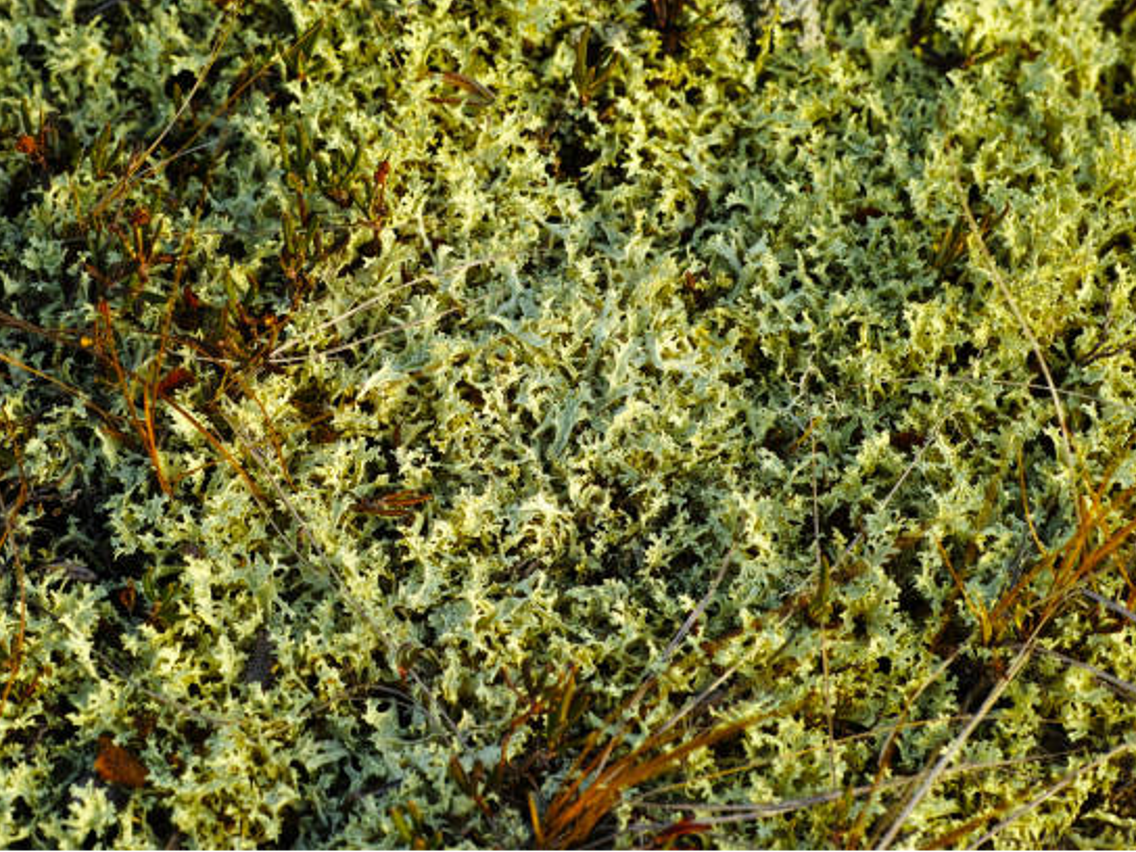Iceland Moss - Cetraria islandica

Common Names: Iceland Moss, Iceland lichen, Lichen islandicus, Icelandisches Moos, Icelandic Moss, Lichen d’Islande, Porost islandzki, Islandslav, Lichene islandico, Cetraria islandica
Latin Name: Cetraria islandica
Origin: Europe, South America, North America
Short Introduction
There are no reliable records on the proper cultivation of Iceland Moss. This lichen requires clean air and is highly sensitive to polluted environments (which is why it does not thrive in cities). Its natural habitats are moist, boggy wetlands.
Detailed Description
A miracle from Iceland for respiratory relief!
Botanical Information
Iceland Moss is a very slow-growing lichen, recognized by its upright, leafy appearance that often resembles moss—a characteristic that inspired its English name. This lichen is a symbiotic union between an alga and a fungus species. Its growth is irregular, exhibiting a pale chestnut color, composed of flat and tough lobes, reaching a height of 10–15 cm (4–6 inches). Branches are tubular or channeled in shape. The upper surface is greenish or olive-brown, while the underside is grayish white or light brown with whitish spots.
Origin and Distribution
Iceland Moss naturally occurs in the mountainous regions of northern countries and is particularly found on lava slopes and plains of Iceland’s western and northern coastlines. It can also be found in the northern mountains of Wales, northern England, Scotland, and in the north of Ireland. In North America, its distribution stretches from the Arctic coast, Alaska, and Newfoundland all the way to the Rocky Mountains, Colorado, and New England.
Usage / Dosage
Historically, Iceland Moss was commonly used as a food source—it flavored meat and was added to soups and sauces. Over time, it became treasured for its medicinal value, especially in traditional folk medicine. It is primarily taken to relieve inflammatory conditions of the respiratory tract, irritable cough, colds, and was also recommended as a mild laxative.
Some European herbalists regard Iceland Moss as a natural antibiotic. It is used to help with catarrh of the upper respiratory tract, to soothe dry coughs, and to reduce symptoms of digestive disturbances.
Antimicrobial activity against Micrococcus luteus has been observed in Iceland Moss samples. Ethanol extracts revealed antimicrobial effects against certain Gram-positive bacteria. Its lichenan content exhibited broad antiviral activity against a range of viruses. In in vitro tests, concentrations of lichenan up to 500 μg/ml did not impact cell-free protein synthesis. Protolichesterinic acid has shown to be a strong inhibitor of human immunodeficiency virus (HIV) DNA polymerase activity.
Traditionally prepared extracts of Iceland Moss have demonstrated an immunological effect in vivo. Preclinical and basic research indicate that aqueous extracts of the lichen display anti-inflammatory effects, likely by altering cytokine secretion. In rats treated with the highest concentration of aqueous extract, significant improvement in arthritis was observed compared to controls.
Antioxidant activity increases with higher extract concentrations, and this effect has been validated by various methods. Several studies also suggest beneficial effects of isolichenan—one of its components—on spatial memory formation in rodents. Constituents of Iceland Moss have also shown strong antitumor effects against allogenic sarcomas in mice.
Clinical Studies
In a double-blind study, 63 adult patients with inflammation and dryness of the oral cavity following nasal surgery were divided into three groups who received doses of 0.048 g, 0.3 g, or 0.5 g of the herbal material. Improvement was observed in all groups. In another study involving 100 patients with oral mucosa or pharyngeal inflammation (laryngitis, pharyngitis), with acute or chronic bronchial catarrh or more serious illness, improvement was documented in 86% of patients who received 160 mg of aqueous extract every 2 to 3 hours.
Active Compounds
Iceland Moss contains a modified form of chlorophyll (called thalloflor), fumaric acid, lichenostearic, lichesterinic, and cetraric acids. It also boasts a high content of polysaccharides—lichenan, β-D-glucan, and isolichenan. Among minerals found are lead, cadmium, mercury, arsenic, calcium, magnesium, iron, and other trace elements.
Traditional Dosage
For relief from respiratory difficulties and cold symptoms, Iceland Moss was traditionally used in powder form in doses of 2–4 grams. According to the European Committee on Herbal Medicinal Products (HMPC), Iceland Moss can be consumed as a herbal tea, with a dose of 1.5 grams boiled in 150 ml of water up to four times daily. Other approved forms include tinctures and refined extracts.
The recommended duration of use should not exceed 1 week (until symptoms subside). For longer use, consult your healthcare provider and be under medical supervision.
Herbal tea made from Iceland Moss is not recommended for children under 12 years due to insufficient safety information.
